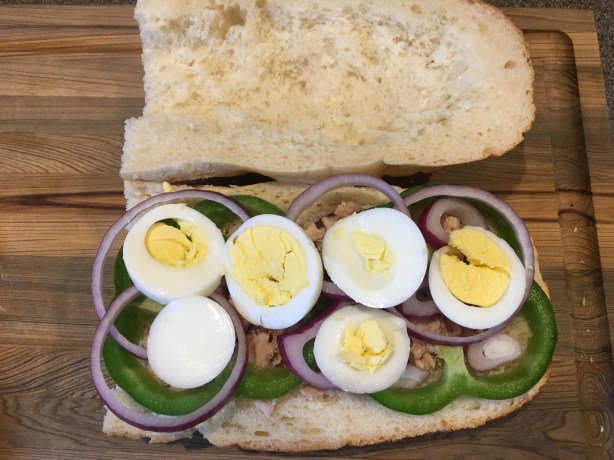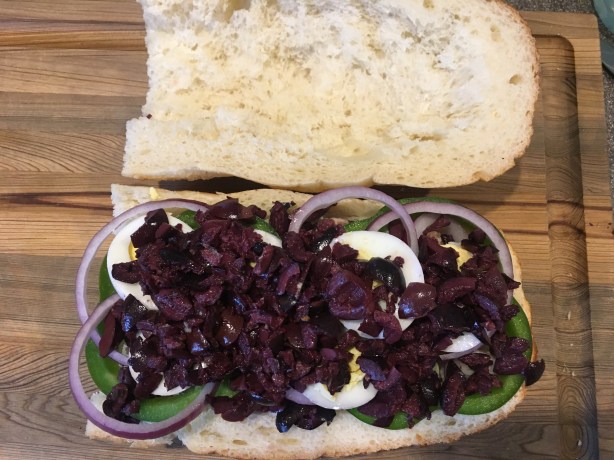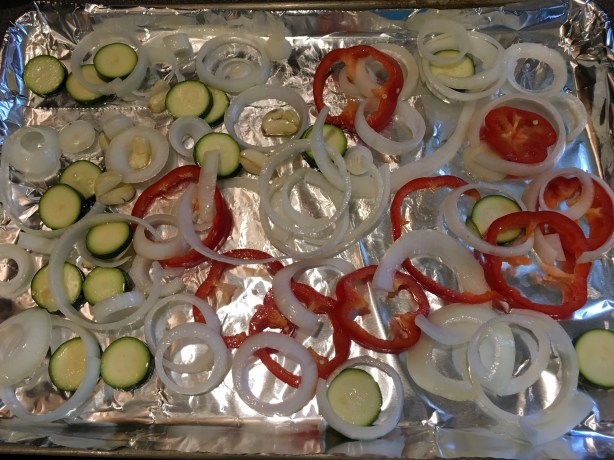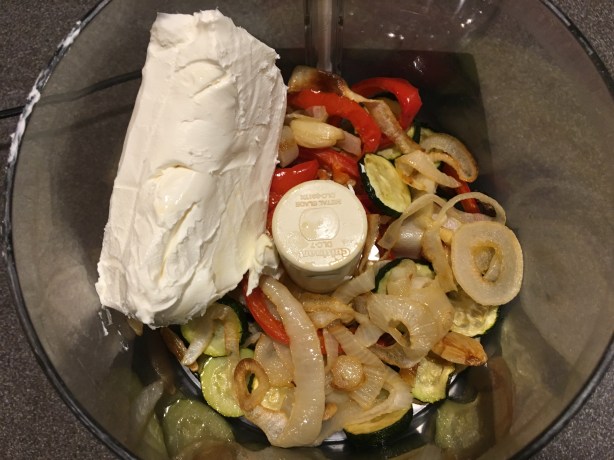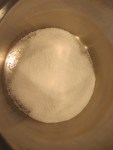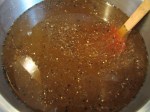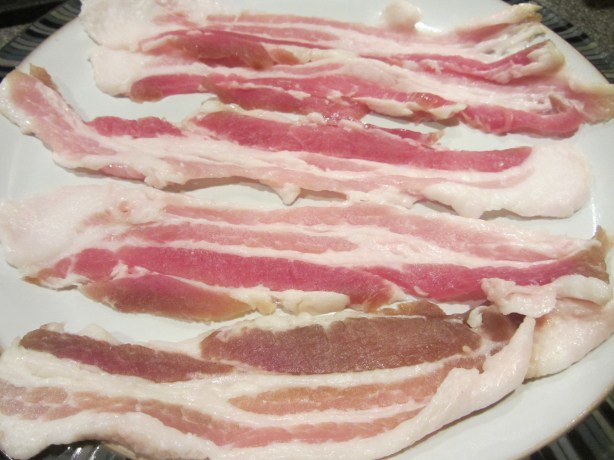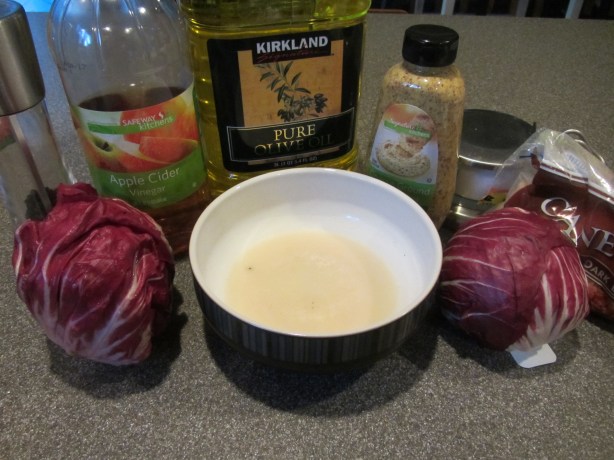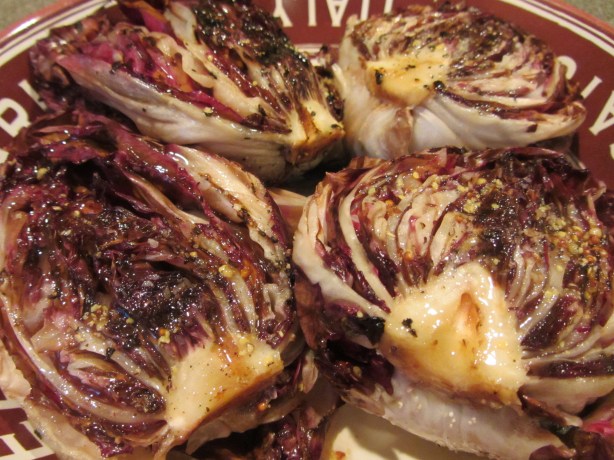I fell behind a little bit in my project, as we went out of town a couple times and our 11-month-old has kept me pretty busy. She is crawling everywhere, standing, and into everything, so I can really only get things done when she is sleeping! Oh, and some days we only take one nap! I also wanted to make some of my favorite summer dishes (gazpacho, caprese, and risotto) before the season is over. Summer has gone by way too quickly for my liking.
This episode, featuring another “flat” food, showcases flounder. Alton claims that flounder is a readily available fish, which is probably true in some areas, but not where I live. I called our local markets and was told that they never have flounder, and that any flounder they would order would be frozen. My only option, it seemed, was to use frozen flounder fillets, so that’s what I did.
Baked Stuffed Flounder
The first flounder recipe is for flounder fillets stuffed with a vegetable filling. This recipe, as written, makes enough for four to six people, so I halved it for us. To make the full recipe, you’ll first want to cook enough rice to yield three cups of cooked rice. You can set the rice aside until later. To start the filling, melt 2 T butter in a skillet over medium-low heat, adding a chopped medium onion and a pinch of Kosher salt.

Onion and Kosher salt in skillet with melted butter.
While the onion sweats, pour 1 C heavy cream and 1/4 C white wine into a saucier over medium heat, and whisk as you bring the mixture to a simmer.
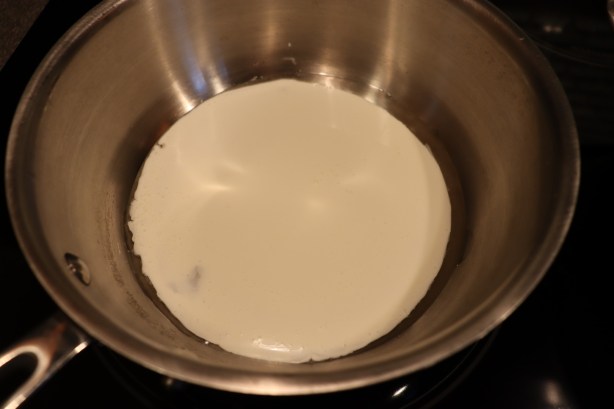
Heavy cream and white wine in saucier.
Meanwhile, add 1 minced clove of garlic to the onion and cook for a minute. Once the cream mixture is simmering, slowly whisk in 10 ounces of cheddar cheese, letting each addition of cheese melt before adding more. When all of the cheese is in and the sauce is smooth, remove it from the heat.
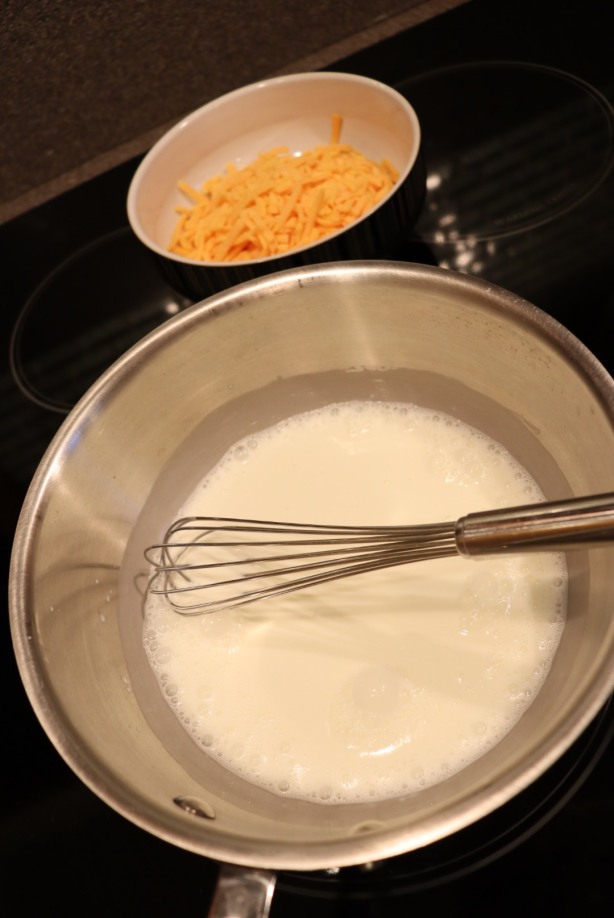
Cheese, ready to add to simmering cream/wine.
To finish the filling, add to the onion pan 10 ounces of chopped frozen spinach that has been thawed and drained, along with the zest of a lemon. Next, add 2 T chopped parsley, 1/2 t Kosher salt, and 1/4 t pepper. Remove the filling from the heat.
Stir the cheese sauce again before placing 1 1/2 to 2 pounds of flounder fillets on a sheet pan. Season the fish liberally with Kosher salt and pepper. Distribute the spinach filling among the fillets, placing a mound at the widest part of each filet.
Roll the fish around the filling, bringing the tail end up over the filling and the head portion down, kind of twisting the fish around the filling. Place the fillets seam side down in a 1 1/2 to 2 quart casserole that has been filled with the 3 C of cooked rice from earlier.
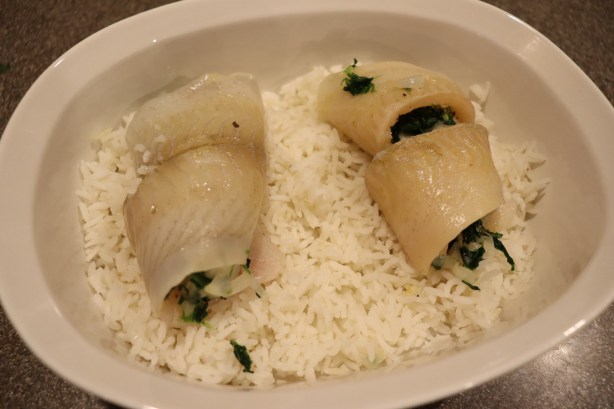
Fillets rolled around filling and placed on rice.
Pour the cheese sauce over the fish and rice and bake the fish for 25 minutes at 350 degrees. Let the fish rest for five minutes before serving.

Cheese sauce poured over fish and rice.

Fish after baking for 25 minutes.

Alton’s stuffed flounder.
Okay, so I instantly cringed at the idea of fish and cheese together when I watched Alton prepare this dish. Cheese and seafood? Well, it turned out that the cheese wasn’t so much of the problem as was my fish. Is all flounder fishy? My flounder smelled super fishy when I opened it and maintained a fishy flavor after cooking. The fish also had a somewhat mushy texture, and we both found it really unappealing. In fact, I just ended up eating the rice with the filling and sauce. I would definitely not make this recipe again as it is written. Maybe this would be better with a different type of fish? Still… fish with cheese. Yeah, I’d recommend skipping this one.
Oil Poached Flounder
After making Alton’s first flounder dish, I decided to make the remaining to recipes with a different type of fish that I could get fresh locally – salmon. My flounder was just so bad that I could tell it would not taste good in any recipe. Yes, substituting ingredients (especially the main ingredient) goes against the premise of this project, but I chose to do it here in Alton’s oil poached flounder recipe. To poach fish in oil, heat 3 C of olive oil on the stove over low heat until it reaches 300-310 degrees.
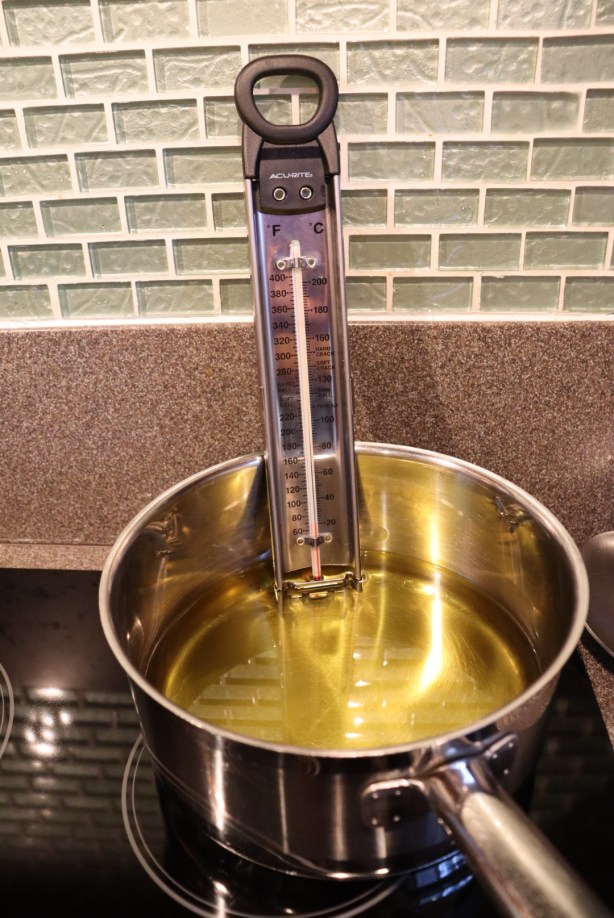
Olive oil heating to 300-310 degrees.
While the oil heats, heat the oven to 350 degrees and season 1 1/2 to 2 pounds of fish fillets with Kosher salt and pepper.

Salmon, seasoned with Kosher salt and pepper and cut into fillets.
Thinly slice a lemon and line the bottom of a cast iron skillet with the lemon slices. Top the lemon slices with a few sprigs of fresh parsley.

A layer of lemon slices and parsley in a cast iron skillet.
Place the fish fillets on top of the parsley and top the fish with another layer of thinly sliced lemon and a few more sprigs of parsley. Make sure your parsley is not wet.
Place the skillet in the preheated oven and carefully pour the hot oil over the fish.

Skillet placed in oven and hot oil poured over.
Let the fish cook for 10 minutes before removing it from the oven. Let the fish rest for five minutes before serving.

Fish after poaching for 10 minutes in the oven.

Alton’s oil poached fish.
You can strain and save the oil for later fish cooking. If you plan to make the next recipe, which uses leftovers from this recipe, be sure to save 1/2 C of the cooking oil and two of the lemon slices. My salmon turned out moist and flavorful, yet not greasy. I do think my fish was slightly overcooked, so I would be tempted next time to cut the cooking time by several minutes. I did like this method of cooking fish and I did save the oil, so I think I’ll try this again. I suppose you could always mix up the fresh herbs; since I used salmon, I think dill would pair well.
Flounder Fish Salad
Leftover fish is typically pretty gross, so I wasn’t sure what to think when I saw Alton making a leftover fish salad. To make this salad, whisk together in a bowl: 3 T white wine vinegar, 1 T lime juice, 1/2 t Kosher salt, 1/8 t pepper, and 8-10 drops of hot sauce.

White wine vinegar, lime juice, Kosher salt, pepper, and hot sauce.
Slowly whisk in 1/2 C of the strained leftover cooking oil from the previous recipe until you have an emulsion.
Fold a pound of leftover cooked fish from the previous recipe into the dressing.

Leftover poached fish added to vinaigrette.
Finally, add two diced leftover lemon slices from the previous recipe, 2 T parsley, and 2 T scallions. Serve the fish salad with crackers.

Diced lemon, parsley, and scallions added to fish.

Alton’s fish salad on crackers.
I used my leftover salmon from the previous recipe and thought this turned out to be surprisingly good. We ate this as an appetizer on crackers. The fish didn’t taste fishy and the vinaigrette had a nice pep to it. The leftover diced lemon added both texture and a bit of tart citrus. I found this to be a very summery dish. While I never would have considered eating leftover fish before, I may make this salad again in the future if we have good leftover fish. I can assuredly say that this recipe would have been awful if I had used the frozen flounder that I used in the first recipe, so if you do decide to try this one, be certain that you are using good fish!


















